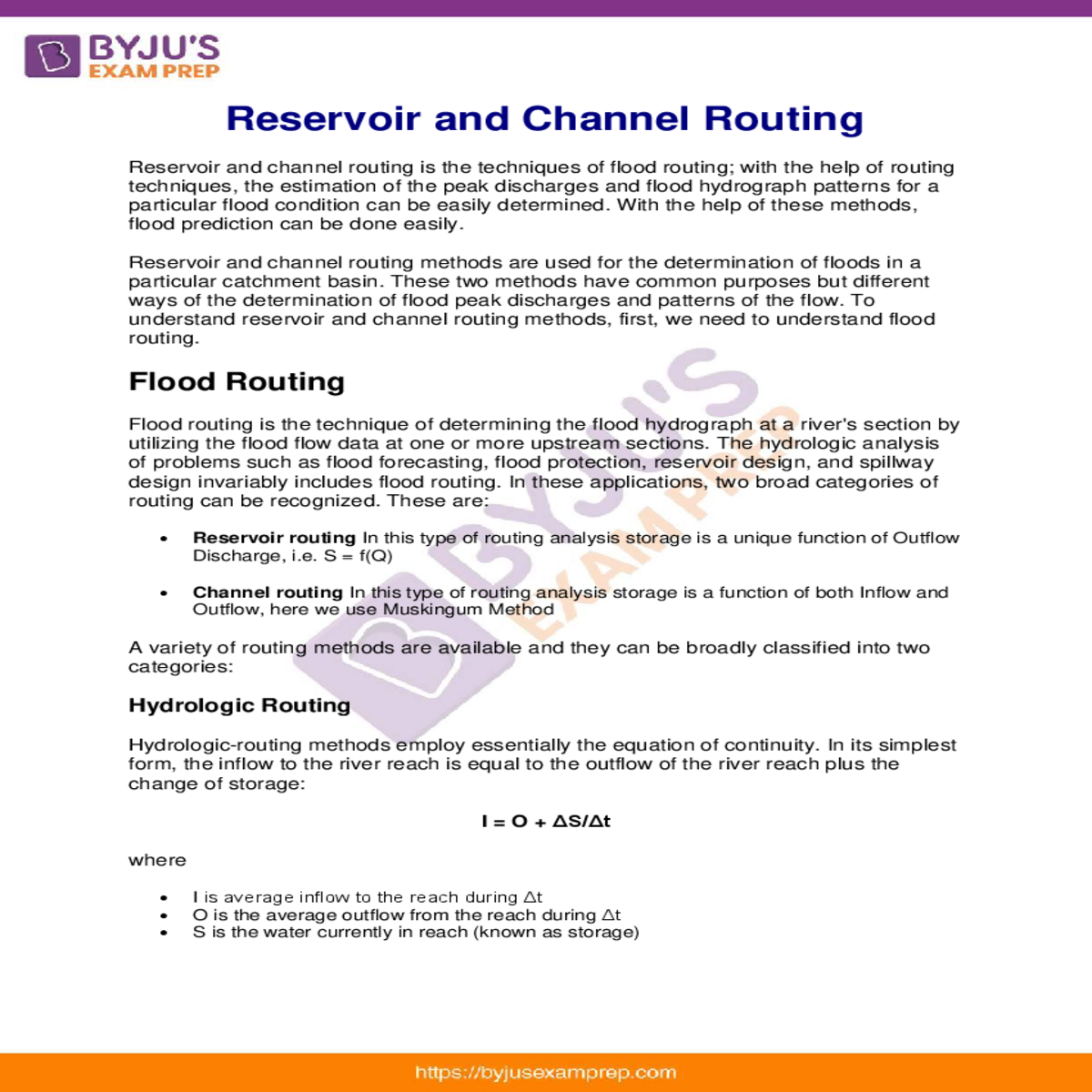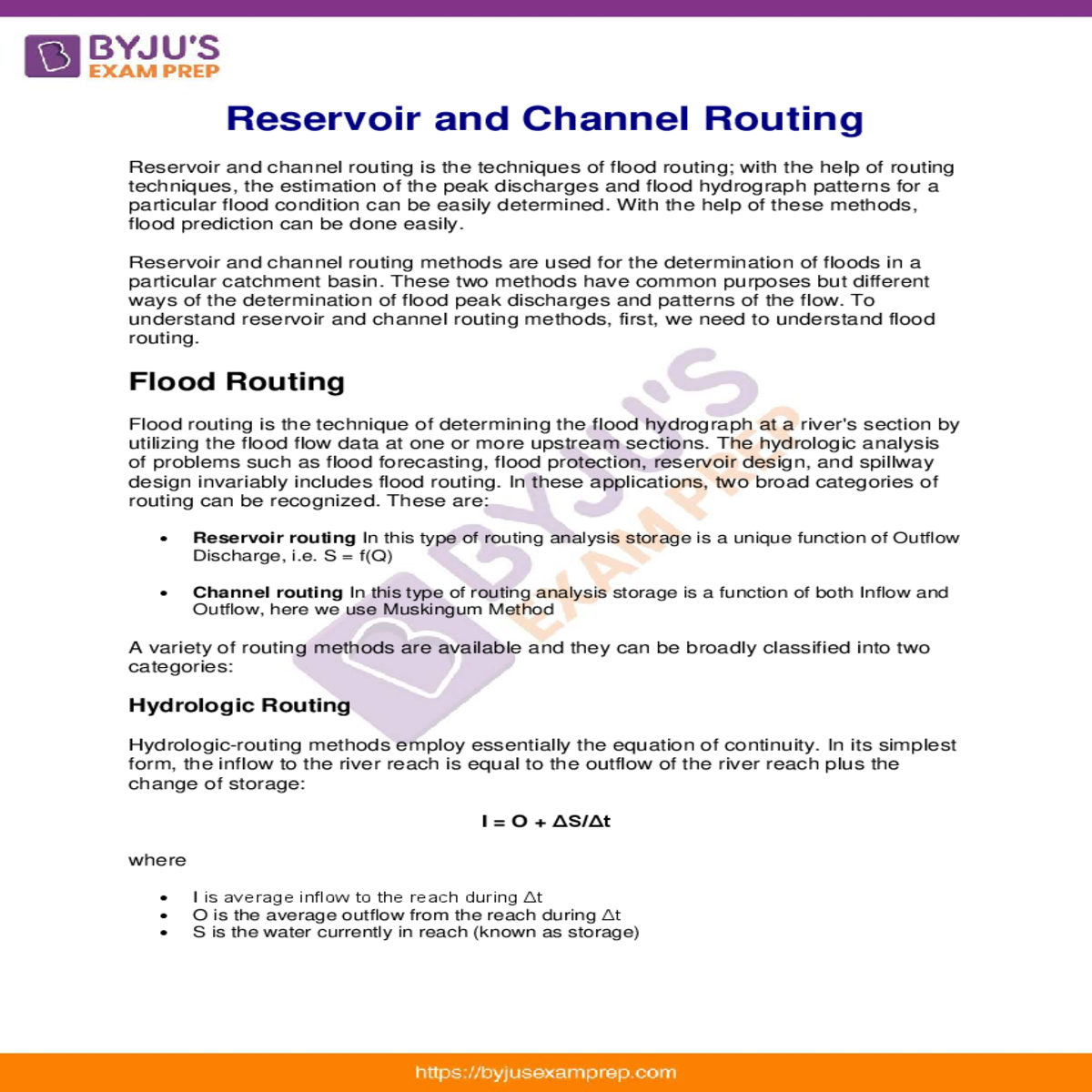Understand reservoir and channel routing methods

Reservoir and Channel Routing
• • |
|---|
Hydrologic-routing methods employ essentially the equation of continuity. In its simplest form, the inflow to the river reach is equal to the outflow of the river reach plus the change of storage:
I = O + ΔS/Δt
The hydrologic models (e.g. linear and nonlinear Muskingum models) need to estimate hydrologic parameters using recorded data in both upstream and downstream sections of rivers and/or by applying robust optimization techniques to solve the one-dimensional conservation of mass and storage-continuity equation.
Hydraulic Routing
Where,
|
|---|
Where,
• X = Weighting factor
Flood Routing Analysis
Flood routing analysis is the process of the determination of the peak discharge of the flood and flow patterns of the flood. Flood routing analyses are carried out based on
Muskingum Method of Channel Routing
The Muskingum method is a channel routing technique of flood routing. The Muskingum method uses the mass conservation approach of the inflow hydrograph.
Where K[s] is a constant, and x is a weighting factor. K is approximately equal to the
“residence time” of the flood wave within the stream reach. K has a unit of time and is a
(I1 + I2)/2 - (O1 + O2)/2 = (S2 - S1)/∆t
When ∆t = K, we can show that O2 = I1. The wave is simply translated with a lag time of K. i.e. No attenuation.
The balance equation;
(I1 + I2)/2 - (O1 + O2)/2 = (S2 - S1)/∆t But we also have
S2 - S1 = K[x(I2 - I1) + (1 - x) (O2 - O1)].
Combining the two equations and re-arranging terms, O2 = C0 I2 + C1
I1 + C2 O1
where
(3) Using I1, I2 and O1, calculate O2.
What is Reservoir Routing?
(S2/∆t + O2/2) = (S1/∆t - O1/2) + (I1 + I2)/2
Given, I1, I2, and (S1/∆t - O1/2), we want to estimate the left-hand
side.
The first step is to determine the relationships between the water stage (H), S and O.





